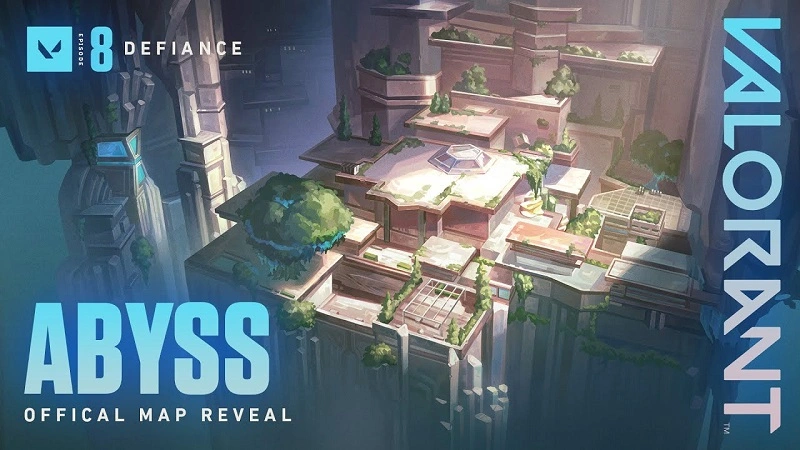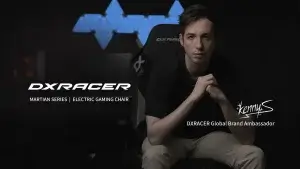On a monthly average, there are up to 150,000 concurrent VALORANT viewers on Twitch. All the time, these viewers will be watching ranked or pro games battle on a series of 7 maps. On this page, we’ll identify and elaborate on the VALORANT competitive maps which are in the current map pool rotation for Patch 10.04.
The following are all the current maps in the VALORANT competitive map pool rotation:
- Split
- Fracture
- Pearl
- Icebox
- Lotus
- Haven
- Ascent
Valorant Competitive Maps Explained
1. Split

As a closed-beta map, Split has been around even before VALORANT‘s official launch in June 2020. In VCT 2023 Champions, one of the best international VALORANT tournaments, Split took the first spot and was picked 22 times.
According to Riot’s Level Design Lead and Senior Game Designer, the vision for the Japanese map was to shift the critical attacking and defending area off-site, towards a center, to be precise. To capture this critical area is to have all the cards since it gives a lot of info and entries for both Attackers and Defenders.
Considering it’s one of the best VALORANT maps out there, fans are thrilled for its return with Patch 10.0.
2. Fracture

With the American map Fracture, which was released in September 2021, control of the two main routes branching off on either side of both sites is the name of the game. The developers call it “pinching.” This sounds harsh for Defenders. And with the map’s 52% Attacker win rate at VCT Masters Tokyo, it was getting harder to defend even for the best Valorant players in the world.
After being in the reserve map pool for a year, Fracture is finally back with no changes to the map at all. Accordingly, we can’t wait to see how the changing meta will influence how competitive players navigate this truly unique map.
3. Pearl

Most Valorant map names describe a theme. With Pearl, the name also describes a concept: keep it simple. This is why the Portuguese map didn’t have a unique mechanical feature at all when it came out in June 2022—except for one crouchable path. Instead, it uses a more detailed three-lane layout and continues to build on ground-level (in this case seabed-level) concepts like angle and terrain.
Because the entire map is underwater, there’s some verticality to it. Aggressively pushing A or B, for instance, requires a tilted crosshair.
At VCT Tokyo Masters 2023, Pearl was the third-most defendable map, with a 51% Defender win rate. Most recently, at VALORANT Champions, the Defense win rate sat at 50.33%. After being pulled out for a year, we’re curious to see how the map plays.
4. Icebox

After leaving the competitive scene rather quickly after rejoining in early 2024, Icebox is finally back. Leaving the rotation due to complaints from the community, we were confused to see its return in March with no changes at all made to the map.
Accordingly, it’s likely that Riot Games is relying on the latest agent meta featuring Tejo to mix up how this map is played. As a historically stale map, we’re curious to see how professionals improve on this controversial map as the best VALORANT teams match up in the cold frost.
5. Lotus

The Indian map Lotus is as tranquil as tranquil gets—the lotus flower is associated with the enlightened Buddha himself. Brought in ahead of the 2023 season, this is only the second map with three bomb sites.
Now that the community has grown accustomed to the map, it’s quickly grown in popularity and offers unique statistics as one of the only maps with statistics favouring Attackers (51.0%).
With Haven also in the map pool, we’re curious to see how the two maps relate to one another amongst the VALORANT ranks.
6. Haven

One of the oldest maps in the VALORANT map pool, Haven has finally returned to the map pool.
What’s more, is that Riot Games has not laid a finger on the map design which is unanimously favoured by the community. Set in Bhutan, this original three-bomb site game changer inspired the preceding map Lotus.
With three bomb sites, the aim is to provide Attackers with more options for direct executions and lurks. Together with Lotus, these maps help balance the map pool with maps that aren’t Defender-sided.
Packing a new meta, we can’t wait to see how professionals innovate on this classic map.
7. Ascent

Other than its mechanical doors and freeing aesthetics, nothing is really special about Ascent – except its traditional three-lane layout is the cornerstone of VALORANT map design.
In June 2020, the Italian map was among the first maps to welcome new and starry-eyed players to Riot’s flagship FPS video game. Ascent, as VALORANT’s foundational experience, is now more popular than ever too, never leaving the competitive map pool since Day 1.
As the longest map to be active, Ascent was finally pulled to reserve with Patch 10.0 and is back in the meta with some exciting changes to slightly adjust how the map is played.
Reserve Maps in Valorant
The following are maps that are outside of the current map pool rotation following the most recent update.
Breeze

Built on a Bahamian coast, Breeze offers extended sightlines and the possibility of open duels. Within seconds into the round, Site A, Site B, and middle players can see and shoot each other from afar.
The pathways are wide just like the bomb sites they lead to. For teams, the large layout is simply a question of who can cover the most area for a possible hold or access.
In December 2022, it was revealed that Breeze would be removed from the map pool. But in August 2023, Breeze returned with a new makeover, streamlined lanes, fewer angles to worry about for Defenders and an additional challenge for splits for the Attackers.
However, as soon as it returned, fans begged for it to be removed due to its stale gameplay – in Patch 9.0, it returns back to the workshop.
Sunset

As the tenth map released by Riot Games, Sunset greeted the community by being introduced with Patch 7.05. Set in Los Angeles, the sun is setting on a traditional map with two sites and three lanes. Notably, the map has elements of other maps, with Mid similar to Bind thanks to the immediate gunfights and B site similar to that of Split.
After a few months, the community had grown familiar with the overpowered B post-plant set-up, the Omen teleport plays on the A site and a very dangerous mid – very similar to how Icebox plays.
Bind

The smallest map on VALORANT, Bind challenges some traditional norms. One of them is the concept of the middle lane, which the developers removed entirely and replaced with direct entry points. This allows an all-out, face-to-face brawl between Attackers and Defenders in less than 5 seconds.
After returning in Spring 2023, the changes made to Bind have made it a more balanced map, improving the chances for the Attackers while also moving around the teleporters to make them a component of strategy, rather than just a gimmick.
Despite being a fan-favourite, Bind was moved out of the rotation in March 2024.
Abyss

With the release of Abyss, there’s only one comparison that the community keeps making – VALORANT’s take on Counter-Strike’s Vertigo.
Removing any barriers keeping players from falling off the map, Abyss embraces a new peak of verticality which seems rather exciting within the secret hidden fortress of the Scions of the Hourgloss.
Featuring a more orthodox design (three lanes and two sites), while the falling seems cool, the design has professionals worried. Specifically, the middle of the map seems useless, while the sites encourage passive play from Attackers.
After a few months in the active map pool, the map has been pulled and might enjoy some tweaks.
If you want to get started with VALORANT betting, you may want to consider looking at the data sets involving these maps.









